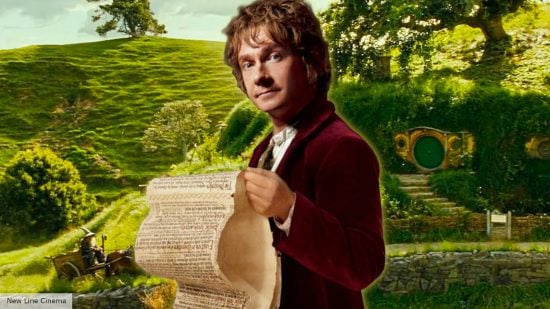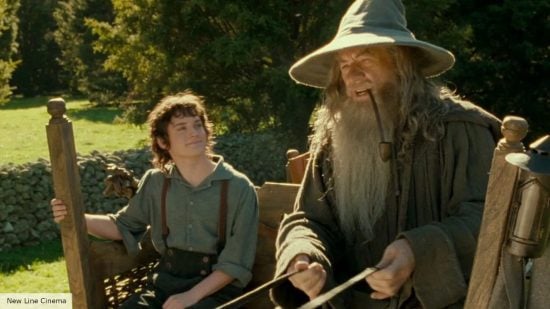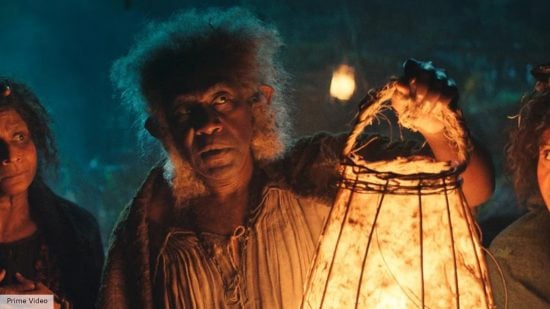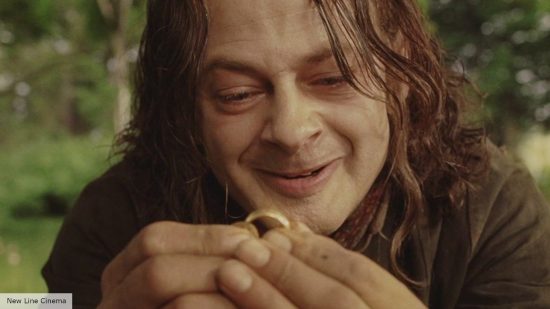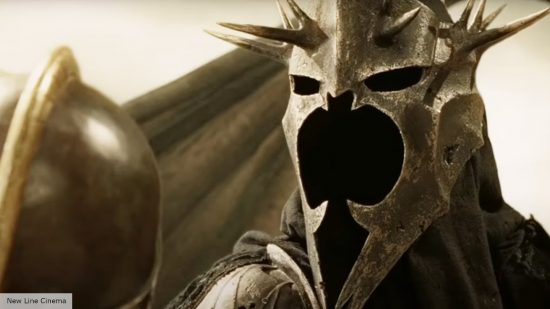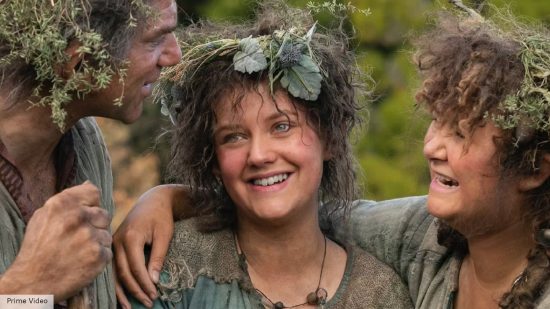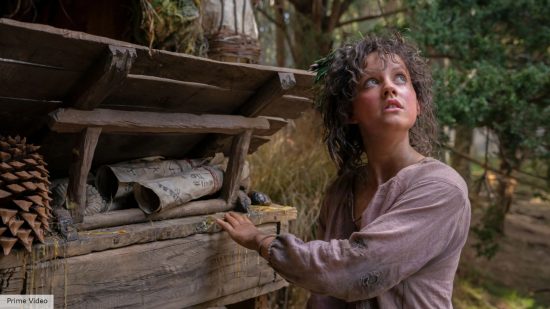What are hobbits? While JRR Tolkien introduced the world to elves, wizards, and orcs, he also proved that sometimes it’s the smallest heroes who can make the biggest difference.
In The Lord of the Rings, it’s the humble hobbits who prove to be the most heroic and valuable of players time and time again. However, despite being some of the most important Lord of the Rings characters across two trilogies, they’re unfairly underestimated. So, we’re giving these halflings the spotlight they deserve, breaking down their history, culture, and the vital role they played in saving Middle-earth from Sauron.
What are hobbits?
Hobbits are a race in Middle-earth that live in The Shire. They are simple farming folk who are known for their large appetites, cozy lifestyles, and short stature.
In Tolkien’s work, the average hobbit stands at three feet and six inches tall, causing many to treat them as children when they first meet this race. But, the fact is you will rarely encounter a Hobbit anyway since they tend to keep to themselves and avoid anything adventurous.
However, if you’ve watched all The Lord of the Rings movies in order, you’d know that some hobbits get dragged into danger, especially if there is a wizard involved. In both The Hobbit and The Lord of the Rings, hobbits play a major role in saving Middle-earth from Sauron’s evil.
Bilbo Baggins is the hobbit whom the wizard Gandalf employs to steal treasure from the dragon Smaug, and Frodo Baggins is the hero who took the One Ring to Mount Doom. So yeah, never underestimate a halfling, folks. They tend to be full of surprises!

All the hobbit types explained
There were three different types of hobbits in Middle-earth until, eventually, all the breeds mixed into the race of Little Folk we see in The Lord of the Rings and The Hobbit movies.
These original hobbit types were the Harfoots, the Stoors, and the Fallohides. However, despite being a thing of the past, Tolkien does make constant reference to Frodo’s ancestors and Gollum’s backstory before the One Ring consumed him, so it is important that we understand each of these hobbit types.
- The Harfoots: These are the most common hobbit types and are the group who prefer to live by hillsides. You may recognize them after their appearance in Amazon’s Rings of Power series. Despite the nomadic lifestyle we see in The Rings of Power, Harfoots will eventually settle down and will become the largest population in The Shire.
- The Stoors: This group lived by swamps and near riverbanks. Unlike other Hobbits who tend to be afraid of boats and large bodies of water, Stoors are savvy fishermen. Gollum was also one of these Stoor hobbits back before he turned into the wretched creature that we all know from the movies. This is why he was so fond of riddles (a typical Hobbit pastime) during his interaction with Bilbo in The Hobbit.
- The Fallohides: the naturally bold, adventurous, and slightly taller than other hobbits. They were the ones who originally colonized The Shire and are the ancestors of both Bilbo and Frodo Baggins. This explains why Gandalf picked our small heroes when it came high time for adventuring – they wouldn’t turn away from some excitement.
The Hobbits’ history explained
Not much is known about the origins of hobbits, but we do know that they came from somewhere in the valley of the Anduin River. This is the land between the Misty Mountains and the area we now know as Mirkwood.
Tolkien also mentioned in the prologue to Lord of the Rings that hobbits are relatives of Men, hinting at some kind of shared origin with “Big People.” However, this connection had long been forgotten and, according to Tolkien, “can no longer be discovered.” So, trying to track down the exact origin of halflings is basically an impossible task.
However, we do have information about hobbits’ activities before the events of The Lord of the Rings, so they aren’t totally mysterious creatures after all. As mentioned above, before Frodo’s trip to Mordor in Lord of the Rings, there were three types of hobbits: the Harfoots, the Stoors, and the Fallohides.
These three tribes remained throughout the Third Age; however, over the centuries, the lines between the three blurred as they mingled and hid from the eyes of other races in Middle-earth. In TA 1050, things changed for hobbits, though, as all tribes started to move westward in search of a new home. If you are wondering why this migration took place, sorry, but we never get any clear reasonings.
But, looking at the timeline, it is during this time when Sauron officially returned from hiding as the Necromancer and set up a base in Greenwood – which is near where the hobbits originally were. So, yeah, we can put two and two together as to why the halflings may have left. Only a few hobbits remained near the Anduin River, and most of them didn’t have the best time.
Greenwood became full of spiders, Orcs, and other evil, turning into the Mirkwood we all know. Also, among the ancestors of the hobbits who remained and headed across the Misty Mountains instead were Déagol and Sméagol. These two found the One Ring while fishing in the Gladden River. Sméagol became Gollum and killed his companion. So yeah, the majority of hobbits who moved West made a good call, in our opinion.
Initially, the traveling hobbits settled around the town of Bree and other human settlements. However, in TA 1601, two Fallohide hobbits, Marcho and Blanco, founded a new settlement on the west bank of the Brandywine called The Shire. Soon, other hobbits joined The Shire and agreed to pay an alliance to the King of Arthedain for the land.
But Arthedain was part of the Northern Kingdom of Men called Arnor that was under attack by Angmar (aka the Witch-realm, led by the top Nazgûl, the Witch-king). During the final standoff at the Battle of Fornost, the hobbits claimed to have sent archers to aid in the fight, but there is no record of this.
And, while the Witch-king was defeated, Arnor was also destroyed. The Shire, on the other hand, survived, and hobbits went on with their lives, appointing their own leaders and largely being ignored by the rest of Middle-earth folk.
Of course, there was still some action throughout the thousands of years until Frodo’s adventures. We know that at one point, goblins invaded The Shire; there were some issues with White Wolves and even a plague. But hobbits survived and kept to themselves still.
As a result, many had never even heard about hobbits by the time of the Lord of the Rings. They had been isolated from the rest of the world and had kept to their own devices away from the watchful eyes of both Men and Sauron’s forces.
Hobbits in the Rings of Power explained
The Rings of Power series does feature a hobbit variant. To be specific, the fantasy series shows us the Harfoots during the Second Age.
Throughout the Rings of Power, we see the Harfoots migrating, traveling across Middle-earth, and looking for a spot to settle in. The show makes a point to tell us that the Harfoots haven’t even reached the Vales of Anduin (which is the earliest point in their history that Tolkien wrote about), so technically, their depiction in the fantasy series does align with their canon timeline…for now.
While the Rings of Power shows us the Harfoots during their “Wandering Days,” it does try to tie in the typical ‘brave hobbit’ characters that we see thousands of years later in The Lord of the Rings, too. In Amazon’s series, there is an inquisitive Harfoot named Nori Brandyfoot who makes contact with a mysterious sorcerer known as The Stranger.
While the Stranger hasn’t been confirmed to be Gandalf yet, hobbits accompanying Wizards is a Tolkien staple, so we wouldn’t be surprised if Amazon broke canon to reveal Gandalf meeting the hobbits during the second age – instead of the Third as Tolkien originally wrote.
We also expect that the Rings of Power season 2 will introduce the other Hobbit types, specifically the Fallohides who famously followed the Harfoots when they migrated during the Third Age and would later mingle with them to become the chieftains of many a Harfoot village.
Also, I really want to see the ancestors responsible for the Took clan who gave us some of the best Lord of the Rings characters of all time: Frodo Baggins, Meriadoc Brandybuck, and, of course, Peregrin Took (aka Pippin). A fan girl can dream, right?
For more on Middle-earth, here are our guides on everyone in the Lord of the Rings cast, all the details on the new Lord of the Rings movies, and when the War of the Rohirrim release date is.
We also have articles on all the new movies coming out this year, the best fantasy movies ever made, the best movies of all time, and a breakdown of Aragorn‘s life and history.
